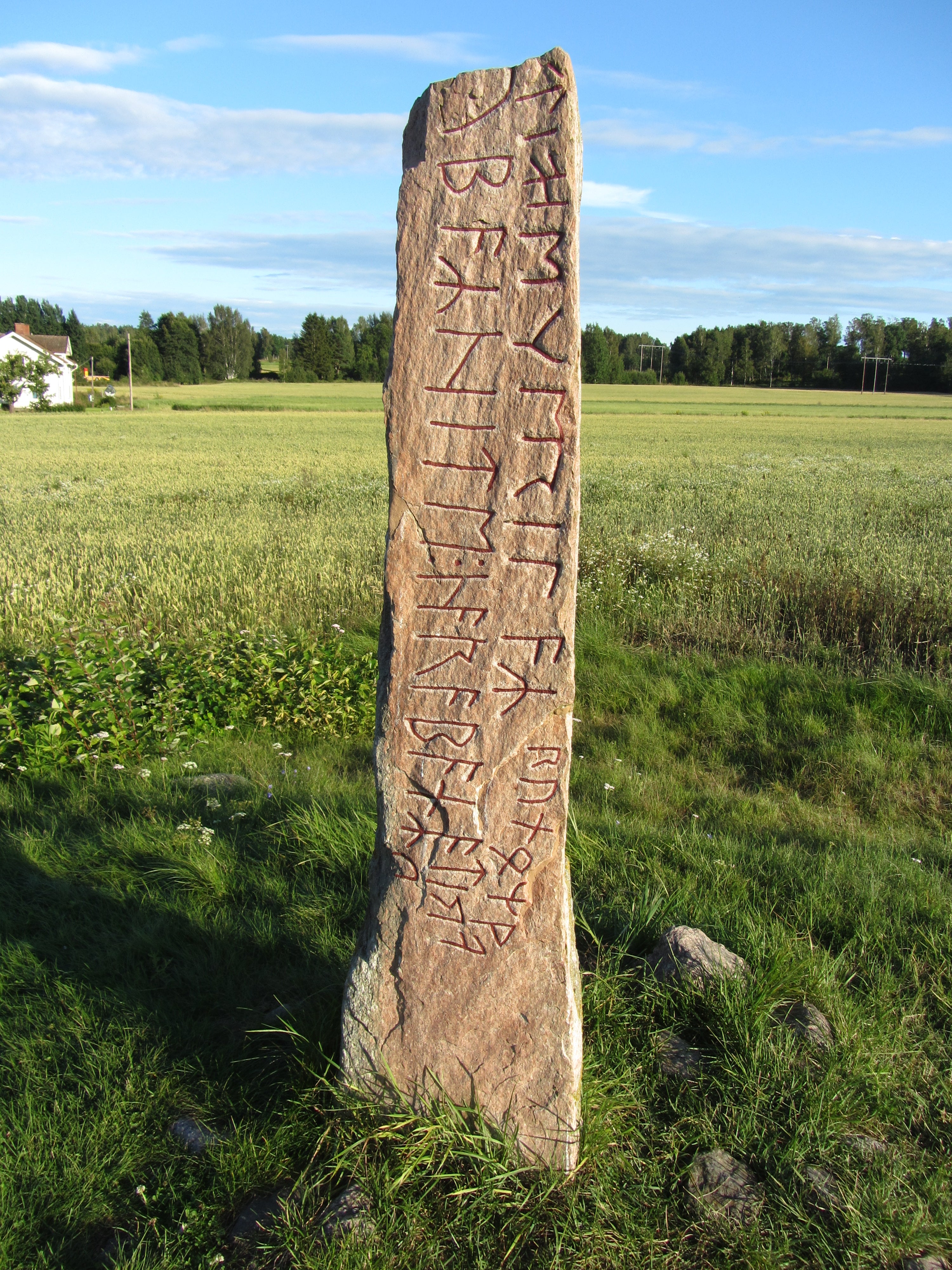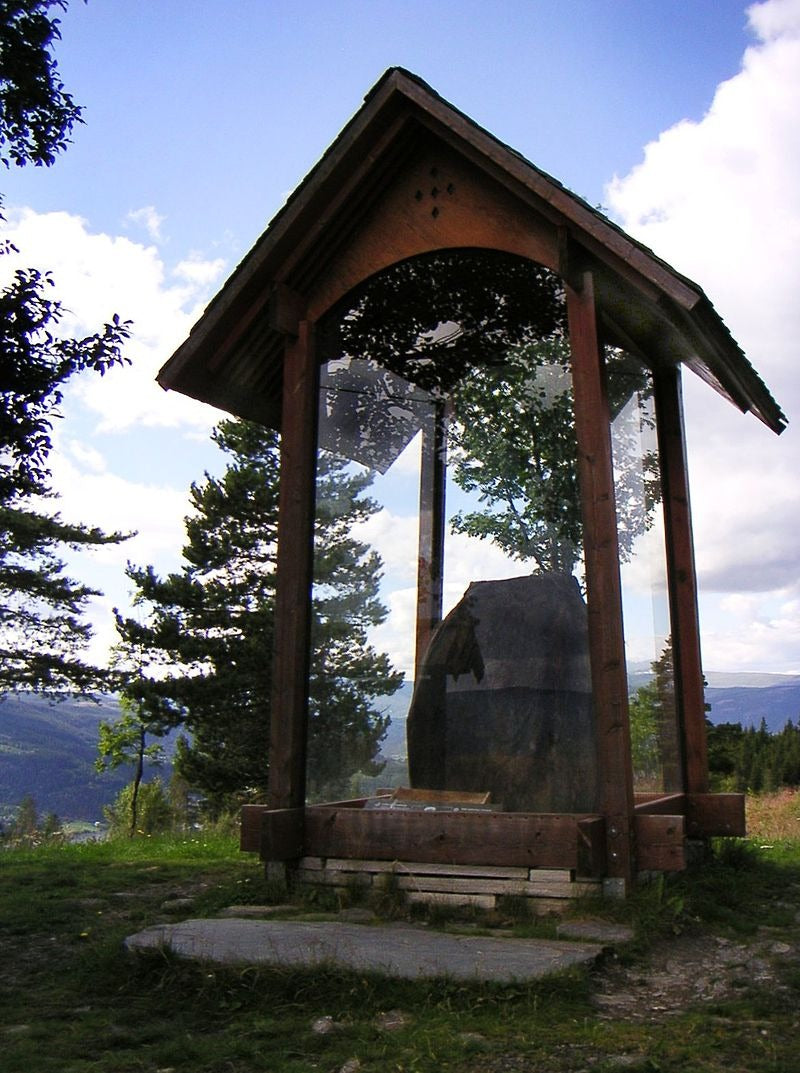Article: The Järsberg Runestone: A Glimpse into the Early Migration Period of Sweden

The Järsberg Runestone: A Glimpse into the Early Migration Period of Sweden
The Järsberg Runestone is a significant archaeological artifact from the early medieval period, located near Kristinehamn in Värmland, Sweden. Dating back to the 6th century, the stone is one of the few surviving examples of Proto-Norse inscriptions from this early period, providing crucial insights into the language, culture, and practices of the time. The runestone, discovered in 1862, is inscribed with text written in the Elder Futhark, the earliest known runic alphabet used by the Germanic tribes of Scandinavia. Its discovery and subsequent study have contributed to the understanding of the early migration period and the development of runic writing.
Discovery and Physical Description
The Järsberg Runestone was found in 1862 in the region of Värmland, Sweden, during agricultural work when it was lying on its side, partially covered in soil. The stone is made of reddish granite and measures approximately 1.5 meters in height. Although the upper part of the stone was damaged and some parts of the inscription are lost, it has remained a valuable historical artifact. Originally, the stone was thought to be part of a stone circle or monument, but further research has suggested that it was erected along an ancient trail called Letstigen, which connected central Sweden with Norway.
In its current state, the Järsberg Runestone stands at its original location, though the surrounding stones that may have formed a monument or circle have since disappeared due to agricultural activities. A 1863 sketch depicts the stone in relation to other nearby stones, suggesting a once larger monumental structure. However, further excavation efforts, including those by the Swedish National Heritage Board in 1975, have failed to uncover any definitive traces of a grave or tumulus, despite initial speculation about its burial context.
Inscriptions and Transcription
The runic inscription on the Järsberg Runestone is written in Elder Futhark, the oldest form of the runic alphabet, and is one of the earliest known examples of written Proto-Norse. The text contains several key names and phrases, though the full inscription is incomplete due to the stone's damaged state. The surviving inscription is as follows:
Proto-Norse Text:
ᚢᛒᚨᛉ … ubaz
ᚺᛁᛏᛖ … hite
᛬ ÷
ᚺᚨᚱᚨᛒᚨᚾᚨᛉ … h=arabana=z
¶ ¶
ᚺᚨᛁᛏ … h=ait...
¶ ¶
ᛖᚲ … ek
ᛖᚱᛁᛚᚨᛉ … e=rilaz
ᚱᚢᚾᛟᛉ … runoz
ᚹᚨᚱᛁᛏᚢ … waritu
Transliteration and Translation:
“Leubaz am I called. Hrafn am I called. I, the eril, write the runes.”
The names Leubaz and Hrafn are significant; Leubaz likely refers to a name meaning "pleasant" or "good," while Hrafn translates directly to "raven." The word erilaz is a title, possibly referring to a noble or warrior class, and it is often associated with the title "earl" or "chieftain." The phrase runoz waritu ("write the runes") indicates that the individual associated with this inscription may have been a scribe or someone skilled in the carving of runes.
The inscription is notable for its use of bind runes—two or more runes joined together to form a single character—which was common in early runic inscriptions. This is seen in the combination of h and a to form h+a in names like Hrafn. The use of a transitional rune form in the word ek (the pronoun "I") suggests that this runestone may date to a time when the Elder Futhark was evolving into its later forms.
Interpretation and Scholarly Debate
The Järsberg Runestone has been the subject of various interpretations, especially regarding its incomplete inscription. Some scholars believe that the missing part of the inscription contains the name Ubaz (meaning "owl"), a name element found in other inscriptions from the Migration Period. However, others suggest that the name Leubaz is more likely, based on linguistic comparisons with other inscriptions. The ambiguity of the stone's condition means that the full meaning of the inscription remains uncertain.
Additionally, the directional reading of the inscription has been debated. Runic inscriptions from this period could be read from right to left, left to right, or even in a serpentine fashion, depending on the stone's orientation. The Järsberg Runestone presents an ambiguous case, with scholars differing on whether the text should be read from right to left or left to right, which complicates the interpretation of certain phrases.
The word erilaz has led to much discussion, as it is a title with unclear implications. While it is often associated with a warrior or leader, some researchers suggest it may also refer to a specific class of elites within early Germanic society. There are parallels to similar terms found in the languages and cultures of neighboring Germanic tribes.
Cultural and Historical Context
The Järsberg Runestone belongs to the early Migration Period (c. 400–600 CE), a time of significant cultural and linguistic transition in Scandinavia. The Elder Futhark, which was used to carve the runes on this stone, was gradually replaced by the Younger Futhark by the end of the Viking Age. This runestone provides one of the earliest known examples of Proto-Norse, helping to bridge the gap between the more archaic linguistic forms of the early Germanic tribes and the later Old Norse language used in the Viking Age.
During the 6th century, Scandinavia was transitioning from a tribal society toward more organized kingdoms, a process that would culminate in the Viking Age centuries later. The Järsberg Runestone may reflect the early stages of this transformation, highlighting the importance of leadership and warrior status as well as the increasing role of written inscriptions in preserving and communicating cultural and familial legacies.
The location of the Järsberg Runestone along the ancient Letstigen trail, which connected Sweden with Norway, also suggests the movement and interaction between different tribes and regions during the Migration Period. This trail was a crucial route for trade, migration, and cultural exchange, and the stone may have been erected by someone with connections to both Swedish and Norwegian territories.
Site History and Excavation

A sketch of the runestones around the possible barrow in 1860s by W. L. Rydberg
The Järsberg Runestone was discovered in 1862, and its original context has been the subject of much study and debate. While early scholars believed the stone may have been part of a larger stone circle or burial monument, excavations in the 1970s and 1980s failed to confirm this theory. No evidence of a grave or tumulus was found during these digs, and the stone's original function remains unclear.
Despite the lack of archaeological evidence for a burial site, a glass bead was found near the stone during a 1987 survey, indicating the possible presence of a female grave nearby. This discovery has led some archaeologists to reconsider the possibility of a tumulus or burial mound in the area, though no definitive conclusion has been reached.
Conclusion
The Järsberg Runestone is a fascinating artifact from the early Migration Period, offering valuable insights into the early use of runic writing, Proto-Norse language, and cultural practices of the time. While much of the inscription remains unclear due to the stone's damaged state, it is nonetheless an important historical marker. The stone's association with the Letstigen trail, its ambiguous inscription, and the ongoing debate surrounding its original use all contribute to its significance in the study of Viking and pre-Viking Scandinavia.
The Järsberg Runestone remains a key piece in the puzzle of understanding the early Germanic tribes of Scandinavia, their languages, and their social structures, bridging the gap between prehistoric and historical periods in Nordic history.
FAQs
- What is the Järsberg Runestone?
The Järsberg Runestone is a 6th-century runic inscription found in Värmland, Sweden, which provides insight into Proto-Norse language and early Germanic culture.
- When was the Järsberg Runestone discovered?
The stone was discovered in 1862 during agricultural work.
- What does the inscription say?
The inscription reads: "Leubaz am I called. Hrafn am I called. I, the eril, write the runes."
- What is the significance of the Järsberg Runestone?
The runestone is significant for its early use of runic writing, offering a glimpse into the language and culture of the 6th-century Germanic tribes. It is one of the few surviving examples of Elder Futhark runes.
- Was the Järsberg Runestone part of a burial site?
Despite early speculation, excavations have not confirmed that the runestone was part of a burial mound, though a glass bead found nearby suggests the presence of a female grave.








